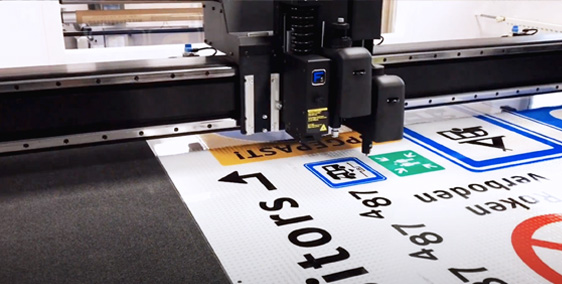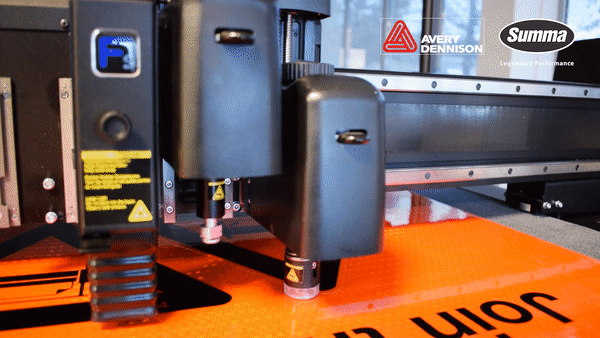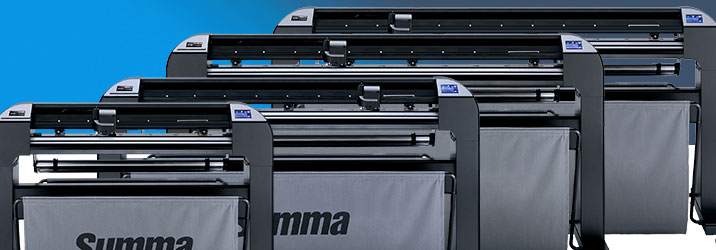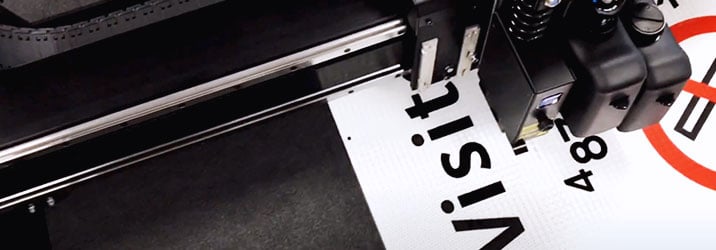
Sign and Display 04/05/2020

Worldwide, the amount of traffic is still growing every year. To keep all this traffic on the right track and to indicate roadworks, an incredible amount of traffic signs is required. Traffic signs or road signs provide valuable information to drivers, cyclists and pedestrians. They indicate the rules in traffic, are helpful in making the roads safer and guide traffic in the right direction. All sorts of signs detailing one-way streets, speed limits, no entry points and many other symbols often use reflective materials to remain visible in the dark. In order to cut such materials, it is important to choose your cutting equipment with care.
No need to say traffic signs can even be a matter of life or death. Therefore, manufacturers make sure they are highly noticeable. And as they are meant to last a long time, they’d better be durable too. Print providers, therefore, use long-lasting fully reflective, durable sheeting for the printing road signs. Amongst this reflective sheeting we can distinguish three categories:
These materials, used to create traffic signs, can be challenging to cut due to their composition and reflection. With Summa, you can choose between two product series to process traffic signs: The Summa F Series flatbed cutters and the Summa S Class 2 roll cutter Series.

Temporary, non-critical traffic signs, such as signs used to regulate traffic on construction sites are usually produced from the engineer-grade sheeting. The embedded beads make engineer-grade sheeting more difficult to cut than standard PVC types of vinyl. However, they can easily be cut with Summa roll cutters from the S Class 2 T Series that use a tangential knife. This is in contrast to the thicker and tougher HIP and diamond grade sheeting, which can only be cut with a flatbed cutter.
The True Tangential cutting head on the Summa S2 T Series features computer-controlled blade rotation and a cutting force of up to 600 grams. This is how the S2 Series combines the precision of a flatbed cutter with the ease and speed of a roll-fed cutter.

Learn more about the Summa S Class 2 T Series
Critical traffic signs are made of the durable High-Intensity Prismatic grade or the rigid diamond grade sheeting. These grades provide for the greatest visibility and are thus ideal to be used for warning signs, signs at pedestrian crossings, highway signs, and so on.
High-Intensity Prismatic grade or diamond grade sheeting is thicker and tougher than engineer-grade. In order to achieve a precise finish, these materials require to be cut with a flatbed finishing system, such as the Summa F1612 flatbed cutter. The flatbed table keeps the material in place enabling flatbed cutters to deliver the most consistent and reliable performance in the processing of prismatic and diamond grade reflective sheeting.
The Summa F1612 flatbed cutter combines high-class performance and functionality built into an ergonomically designed compact construction. It will cut through or kiss cut all types of reflective sheeting available on the market. For instance, choose the 45° knife for the kiss-cut tool or the burr-free knife, which provides for better finishing of the edges. Hence, these reflective sheets are cut easily and pinpoint accurately at all times.

Image courtesy of TrafficSupply.
Other benefits of the F1612 flatbed cutter include:
Learn more about the Summa F Series